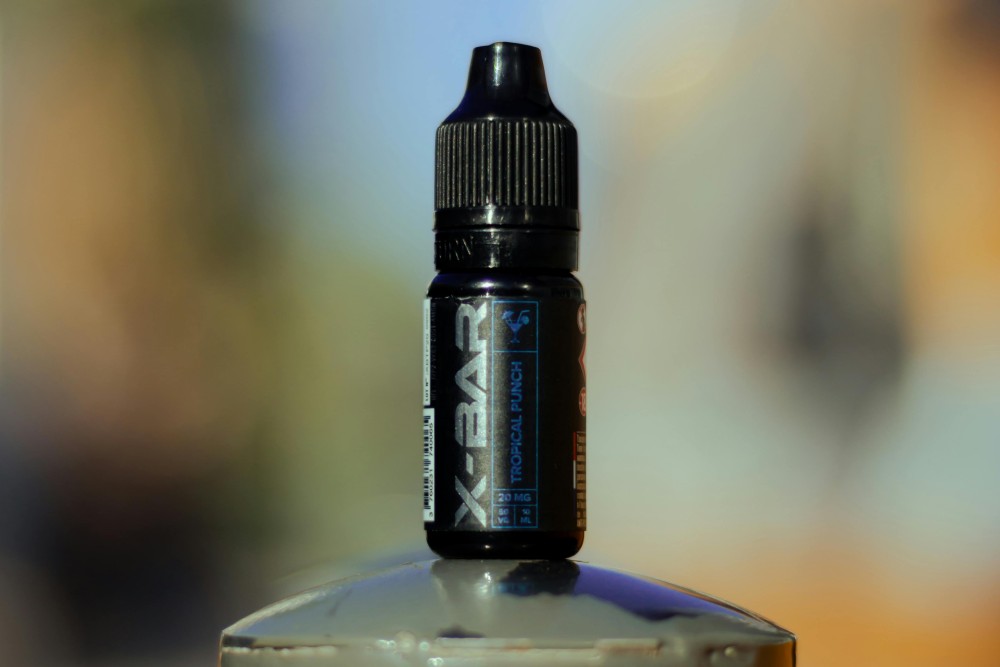Detailed guide explaining how vape devices, e-liquid, and vapor function.
By K Futur UncategorizedExplore the differences between nicotine salts and freebase, how vape juice is made, the impact of regulation on flavors, and how much nicotine you’re really inhaling.
Introduction
E-liquids are the heart of any vaping experience, and understanding what goes into them is essential for making informed choices. Whether you’re a beginner trying to figure out which nicotine type suits you or someone curious about why certain vape flavors are disappearing from shelves, this article offers clarity. We’ll examine how e-liquid is made, the key differences between freebase nicotine and nicotine salts, and discuss the growing impact of flavor bans. We’ll also explore how much nicotine you’re actually inhaling when you vape, a topic many new users often overlook.
Freebase vs. Nicotine Salts: What’s the Difference?
Nicotine in e-liquids primarily comes in two forms: freebase and nicotine salts. Freebase nicotine is the purest form and has been used in cigarettes for decades. It’s absorbed more slowly and hits harder on the throat, which makes it popular among users who want a more intense experience and are used to smoking traditional cigarettes. Nicotine salts, on the other hand, are chemically modified to be smoother on the throat even at higher strengths. This makes them ideal for lower-powered pod systems and for people who want a strong nicotine hit without the harsh sensation.
Understanding the distinction is important when choosing your device and e-liquid. Pod systems typically work better with nicotine salts due to their lower power output, while sub-ohm devices are usually paired with freebase nicotine to produce larger vapor clouds and a milder throat hit. Your choice will largely depend on your nicotine tolerance, how often you vape, and the kind of sensation you’re looking for.
How E-Juice Is Made (And What to Look Out For)
E-juice, or vape juice, typically consists of four main ingredients: propylene glycol (PG), vegetable glycerin (VG), nicotine, and flavorings. PG is responsible for carrying flavor and delivering a throat hit, while VG contributes to vapor production and gives the e-liquid its smoothness. The ratio of PG to VG can greatly affect your vaping experience. Higher PG blends offer a stronger throat hit and better flavor, while high VG liquids are smoother and more suitable for cloud chasing.
The quality of these ingredients matters. Some cheap e-liquids use artificial additives or substandard flavorings that can cause irritation or unpleasant tastes. It’s always recommended to buy from reputable brands that list ingredients clearly and conduct third-party testing. Transparency in sourcing and manufacturing is a good indicator of an e-liquid you can trust.
Users should also be cautious about DIY e-liquid or buying unregulated products from unknown sources, as these can contain harmful contaminants or incorrect nicotine levels. Quality control is key, especially when you’re inhaling these substances directly into your lungs.
Flavors and Regulation: Why Some Are Being Banned
Flavored e-liquids have become a focal point of public health debates. While many adult users enjoy flavors like fruit, dessert, and menthol, these same flavors have drawn criticism for their appeal to younger audiences. In response, several countries and regions have implemented bans or restrictions on flavored vape products.
In the United States, the FDA has moved to limit flavors in closed pod systems, while open-tank systems have faced less scrutiny. The European Union and countries like Canada have also introduced regulations to restrict flavor offerings. The UK, however, still allows a wider range of flavors, recognizing their role in helping adult smokers switch from cigarettes.
These regulations are intended to protect youth from nicotine addiction, but they have also led to reduced choices for adults trying to quit smoking. Some users have responded by turning to black-market or DIY solutions, which carry their own risks. Staying informed about your local laws and purchasing from compliant vendors helps ensure you’re using safe, legal products.
How Much Nicotine Are You Really Inhaling When You Vape?
Understanding nicotine strength in vape juice can be confusing. Unlike cigarettes, which deliver a consistent amount of nicotine per stick, vaping involves many variables. Nicotine levels in e-liquid are usually labeled in milligrams per milliliter (mg/ml). Common strengths range from 3 mg to 50 mg depending on the type of nicotine and the device you’re using.
However, how much nicotine you actually inhale depends on puff duration, device efficiency, coil resistance, and how often you vape. A small pod system with 20 mg nicotine salts can deliver as much or more nicotine per puff as a cigarette, especially when used frequently throughout the day. In contrast, sub-ohm devices used with low-nicotine freebase liquids produce more vapor but less nicotine per puff, which can balance out over time.
Tracking your nicotine intake is important if you’re trying to manage your dependence or cut back. Many new vapers unknowingly consume more nicotine than they did when smoking, especially with high-strength salts. Awareness and moderation are key to ensuring vaping remains a helpful alternative rather than creating a new habit that’s harder to control.
Conclusion
Choosing the right e-liquid goes beyond just picking a flavor. Understanding how nicotine types affect your body, being aware of what’s in your vape juice, and knowing the legal landscape around flavors can all make a big difference in your vaping experience. By paying attention to these factors, you can better control your nicotine use, reduce potential harm, and avoid common pitfalls like using too much nicotine without realizing it.
Whether you’re new to vaping or looking to optimize your setup, education is your most powerful tool. Staying informed about how e-liquids work and the laws that govern them helps you make safer, smarter decisions every time you pick up your device.
Further Reading:
For flavour inspiration, see The Best Vape Juice 2025. To learn how nicotine works outside of vaping, check our Nicotine Pouches Strength Guide. For legal issues around vape liquid use, read Legal and Practical Info on Vaping.
Beginner FriendlyHealthNicotine SaltsRegulations






